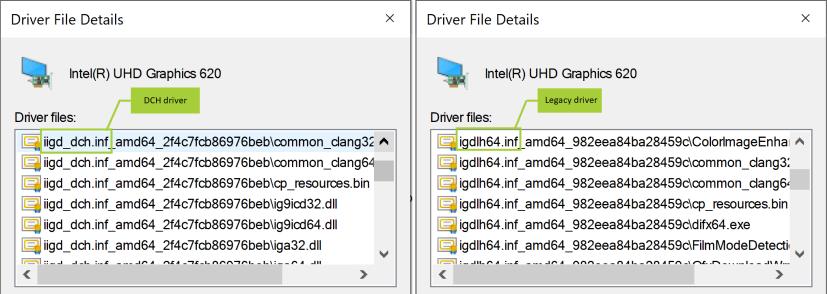- This driver is used as fallback driver so that you can use your new monitor before proper drivers can be downloaded and installed. The basic driver for Generic PnP monitor is already installed in Windows 10 by default, so, while connecting any type of monitor to our pc, this driver should exist in your pc otherwise the monitor will not work.
- The Epson Universal Print Driver supports multiple printer languages, such as PCL and ESC/P-R, and can be installed on a Windows computer. Note: Make sure your product is turned on and connected to the same network as your computer before installing the printer software. Depending on your model, not all printer languages may be supported.
594 drivers total Last updated: Jun 15th 2018, 03:55 GMT RSS Feed

If you have a GDI laser printer and this database does not point you to any drivers for it, try especially the 'foo2zjs' driver for Zenographics' ZJ-stream format which probably also works with some Minolta, QMS, and other printers or also Samsung's 'gdi' driver which is known to work on several Samsung and one Lexmark laser printer. The Synaptics device driver is customized to meet the specific requirements of your device manufacturer. To ensure that you get the appropriate device driver for your system, download your.
sort by:
RICOH PS V4 Printer Generic Driver 1.6.0.0 for Windows 10 Fall Creators Update 64-bit
5,380downloads
RICOH PS V4 Printer Generic Driver 1.6.0.0 for Windows 10 Fall Creators Update
566downloads
RICOH PS V4 Printer Generic Driver 1.6.0.0 for Windows Server 2012
238downloads
RICOH PS V4 Printer Generic Driver 1.6.0.0 for Windows Server 2012 64-bit
298downloads
RICOH PS V4 Printer Generic Driver 1.6.0.0 for Windows Server 2012 R2
79downloads
RICOH PS V4 Printer Generic Driver 1.6.0.0 for Windows Server 2012 R2 64-bit
186downloads
Driver Generique Lexmark
RICOH PS V4 Printer Generic Driver 1.6.0.0 for Windows Server 2016
108downloads
RICOH PS V4 Printer Generic Driver 1.6.0.0 for Windows Server 2016 64-bit
117downloads
RICOH PS V4 Printer Generic Driver 1.6.0.0 for Windows 8.1
191downloads
RICOH PS V4 Printer Generic Driver 1.6.0.0 for Windows 8.1 64-bit
237downloads
RICOH Printer PS V4 Generic Driver 1.2.0.0 for Windows 8.1
683downloads
RICOH Printer PS V4 Generic Driver 1.2.0.0 for Windows 8.1 64-bit
372downloads
RICOH Printer PS V4 Generic Driver 1.2.0.0 for Windows Server 2012 64-bit
115downloads
RICOH Printer PS V4 Generic Driver 1.2.0.0 for Windows 10 Anniversary Update 64-bit
567downloads
RICOH Printer PS V4 Generic Driver 1.2.0.0 for Windows 10 Anniversary Update
163downloads
RICOH RPCS V4 Printer Generic Driver 1.2.0.0 for Windows 8.1 64-bit
1,186downloads
RICOH RPCS V4 Printer Generic Driver 1.2.0.0 for Windows 8.1
262downloads
RICOH RPCS V4 Printer Generic Driver 1.2.0.0 for Windows 10 Anniversary Update 64-bit
928downloads
RICOH PCL6 V4 Driver for Universal Print 1.2.0.0 for Windows 8.1
561downloads
RICOH PCL6 V4 Driver for Universal Print 1.2.0.0 for Windows 8.1/Server 2012 64-bit
173downloads
RICOH RPCS V4 Printer Generic Driver 1.2.0.0 for Windows 10 Anniversary Update
305downloads
RICOH PCL6 V4 Driver for Universal Print 1.2.0.0 for Windows 10 Anniversary Update
489downloads

RICOH PCL6 V4 Driver for Universal Print 1.2.0.0 for Windows 10 Anniversary Update 64-bit
2,115downloads
Ricoh SP 4510SF Printer Network WIA Scanner Driver 1.0.108.3
3,411downloads
Ricoh SP 4510SF Printer Network TWAIN Scanner Driver 5.56.00
2,309downloads
Ricoh SP 4510SF Printer PostScript3 Driver 1.3.0.0 64-bit
116downloads
Ricoh SP 4510SF Printer PCL6 Universal Print Driver 4.9.0.0 64-bit
276downloads
Ricoh SP 4510SF Printer PCL 5e Driver 1.3.0.0 64-bit
101downloads
Ricoh SP 4510SF Printer Network TWAIN Scanner Driver 5.56.00 64-bit
1,340downloads
Ricoh SP 4510SF Printer PS Universal Print Driver 4.9.0.0
186downloads
The Windows ACPI driver, Acpi.sys, is an inbox component of the Windows operating system. The responsibilities of Acpi.sys include support for power management and Plug and Play (PnP) device enumeration. On hardware platforms that have an ACPI BIOS, the HAL causes Acpi.sys to be loaded during system startup at the base of the device tree. Acpi.sys acts as the interface between the operating system and the ACPI BIOS. Acpi.sys is transparent to the other drivers in the device tree.
Other tasks performed by Acpi.sys on a particular hardware platform might include reprogramming the resources for a COM port or enabling the USB controller for system wake-up.
In this topic
ACPI devices
The hardware platform vendor specifies a hierarchy of ACPI namespaces in the ACPI BIOS to describe the hardware topology of the platform. For more information, see ACPI Namespace Hierarchy.
For each device described in the ACPI namespace hierarchy, the Windows ACPI driver, Acpi.sys, creates either a filter device object (filter DO) or a physical device object (PDO). If the device is integrated into the system board, Acpi.sys creates a filter device object, representing an ACPI bus filter, and attaches it to the device stack immediately above the bus driver (PDO). For other devices described in the ACPI namespace but not on the system board, Acpi.sys creates the PDO. Acpi.sys provides power management and PnP features to the device stack by means of these device objects. For more information, see Device Stacks for an ACPI Device.
A device for which Acpi.sys creates a device object is called an ACPI device. The set of ACPI devices varies from one hardware platform to the next, and depends on the ACPI BIOS and the configuration of the motherboard. Note that Acpi.sys loads an ACPI bus filter only for a device that is described in the ACPI namespace and is permanently connected to the hardware platform (typically, this device is integrated into the core silicon or soldered to the system board). Not all motherboard devices have an ACPI bus filter.
All ACPI functionality is transparent to higher-level drivers. These drivers must make no assumptions about the presence or absence of an ACPI filter in any given device stack.
Acpi.sys and the ACPI BIOS support the basic functions of an ACPI device. To enhance the functionality of an ACPI device, the device vendor can supply a WDM function driver. For more information, see Operation of an ACPI Device Function Driver.
An ACPI device is specified by a definition block in the system description tables in the ACPI BIOS. A device's definition block specifies, among other things, an operation region, which is a contiguous block of device memory that is used to access device data. Only Acpi.sys modifies the data in an operation region. The device's function driver can read the data in an operation region but must not modify the data. When called, an operation region handler transfers bytes in the operation region to and from the data buffer in Acpi.sys. The combined operation of the function driver and Acpi.sys is device-specific and is defined in the ACPI BIOS by the hardware vendor. In general, the function driver and Acpi.sys access particular areas in an operation region to perform device-specific operations and retrieve information. For more information, see Supporting an Operation Region.
ACPI control methods

Driver Generique Canon
ACPI control methods are software objects that declare and define simple operations to query and configure ACPI devices. Control methods are stored in the ACPI BIOS and are encoded in a byte-code format called ACPI Machine Language (AML). The control methods for a device are loaded from the system firmware into the device's ACPI namespace in memory, and interpreted by the Windows ACPI driver, Acpi.sys.
To invoke a control method, the kernel-mode driver for an ACPI device initiates an IRP_MJ_DEVICE_CONTROL request, which is handled by Acpi.sys. For drivers loaded on ACPI-enumerated devices, Acpi.sys always implements the physical device object (PDO) in the driver stack. For more information, see Evaluating ACPI Control Methods.
ACPI specification
The Advanced Configuration and Power Interface Specification (ACPI 5.0 specification) is available from the Unified Extensible Firmware Interface Forum website.
Revision 5.0 of the ACPI specification introduces a set of features to support low-power, mobile PCs that are based on System on a Chip (SoC) integrated circuits and that implement the connected standby power model. Starting with Windows 8 and later versions, the Windows ACPI driver, Acpi.sys, supports the new features in the ACPI 5.0 specification. For more information, see Windows ACPI design guide for SoC platforms.
ACPI debugging
System integrators and ACPI device driver developers can use the Microsoft AMLI debugger to debug AML code. Because AML is an interpreted language, AML debugging requires special software tools.
For more information about the AMLI debugger, see ACPI Debugging.
Microsoft ACPI source language (ASL) compiler
For information about compiling ACPI Source Language (ASL) into AML, see Microsoft ASL Compiler.
Version 5.0 of the Microsoft ASL compiler supports features in the ACPI 5.0 specification.
The ASL compiler is distributed with the Windows Driver Kit (WDK).
Driver Generique Bluetooth
The ASL compiler (asl.exe) is located in the ToolsarmACPIVerify, Toolsarm64ACPIVerify, Toolsx86ACPIVerify, and Toolsx64ACPIVerify directories of the installed WDK, for example, C:Program Files (x86)Windows Kits10Toolsx86ACPIVerify.
